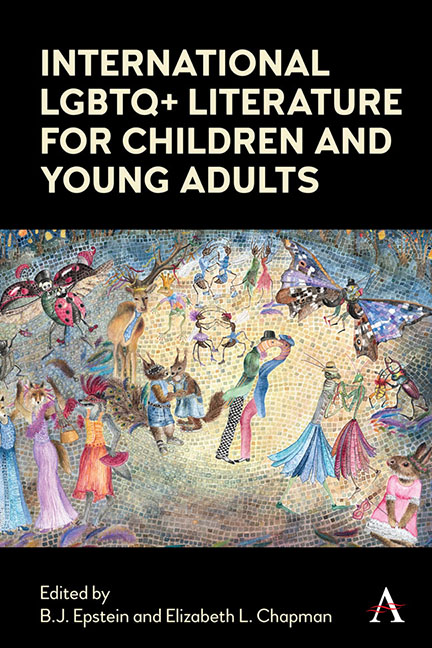Book contents
- Frontmatter
- Dedication
- Contents
- List of Illustrations
- Acknowledgements
- Notes on contributors
- Introduction
- BRAZIL
- FRANCE
- GERMANY/ AUSTRIA
- GREENLAND
- INDIA
- INDIGENOUS WRITING
- ITALY
- MULTINATIONAL
- MULTINATIONAL
- MULTINATIONAL
- THE PHILIPPINES
- SLOVENIA
- SOUTH KOREA
- SPAIN
- SWEDEN
- SWEDEN
- List of Primary Texts
- Index
Chapter Thirteen - Boys Who Wear Dresses: Queer Narrative Strategies in Korean Children’s Literature
Published online by Cambridge University Press: 18 November 2021
- Frontmatter
- Dedication
- Contents
- List of Illustrations
- Acknowledgements
- Notes on contributors
- Introduction
- BRAZIL
- FRANCE
- GERMANY/ AUSTRIA
- GREENLAND
- INDIA
- INDIGENOUS WRITING
- ITALY
- MULTINATIONAL
- MULTINATIONAL
- MULTINATIONAL
- THE PHILIPPINES
- SLOVENIA
- SOUTH KOREA
- SPAIN
- SWEDEN
- SWEDEN
- List of Primary Texts
- Index
Summary
Introduction
The 25th of May in 2001 was a watershed moment for queer rights in the Republic of Korea (known colloquially in the West as ‘South Korea’), when future Nobel Peace Prize laureate Kim Dae-jung signed the ratification of the National Human Rights Council Act, creating the first legislative protection for persons of all ‘sexual orientations’ (National Human Rights Commission of Korea 2010). The Supreme Court also legalized the changing of gender in the family registry for transgender persons in 2006, with the right being extended in certain regions to pre-op female-to-male transgender persons in March 2013 and pre-op male-to-female transgender persons in February 2017 (Kim 2017, n.p.). The queer rights movement has not been without setbacks; since 2007, the movement has tried and failed to pass an anti-discrimination act that would administer more effective measures against discrimination, and while the battle for human rights ordinances, including protection for queer people, continues to be waged region-by-region, universal recognition for the equal rights of queers remains elusive on the peninsula.
Korean literature, however, is a markedly different story. Even compared to other countries in East Asia that are several times its size in population, Korea boasts a rich queer tradition in modern and contemporary fiction. Korea’s first work of modern fiction is a queer narrative (the short story ‘Is It Love?’ by Yi Kwang-su, published in 1909), and there are at least 300 verified queer works published in Korea – more than twice that number counting translations (Hur 2018, n.p.). Compared to this richness, however, queer children’s and young adult books are only very recently beginning to find traction in Korean publishing. For the purposes of this chapter, I have only considered works originally written in Korean and published in Korea, while I fully acknowledge the important role translated literature has played in the shaping and enrichment of domestic literary discourse and production.
How are we to explain queerness to children, a group of readers who arguably do not understand sexuality as adults do? What constitutes sexuality and ‘being queer’ for children?
- Type
- Chapter
- Information
- International LGBTQ+ Literature for Children and Young Adults , pp. 251 - 256Publisher: Anthem PressPrint publication year: 2021

